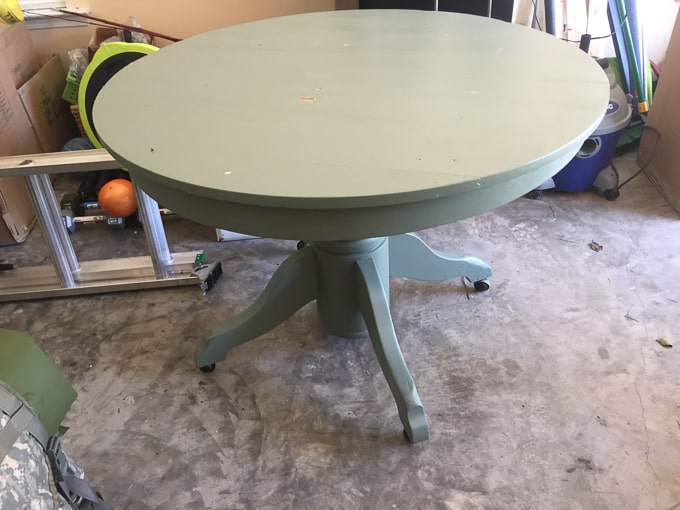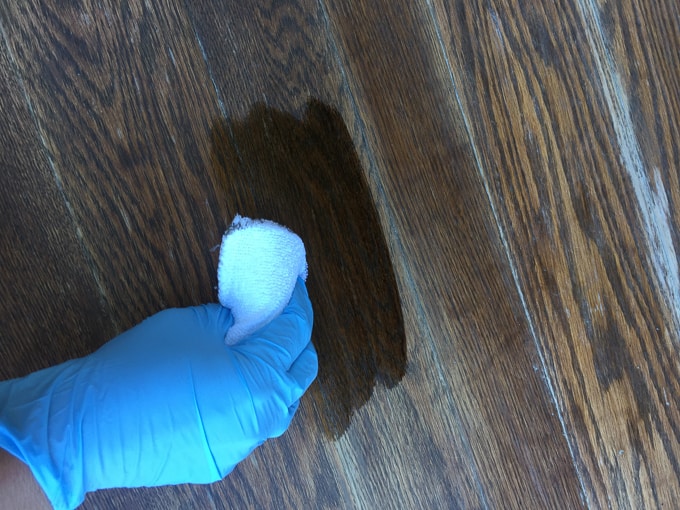It is not hard to learn how to strip paint off furniture. With a little patience and my favorite paint stripper, you can easily remove paint from painted furniture without a lot of elbow grease!

I knew from the moment we bought our home that I wanted a round table for the eat in kitchen. (See how the house looked when we bought it here, it's crazy different!)
We're a family of 5 and eat dinner in our regular dining room, I saw this space more for my boys to have breakfast at in the mornings before school and do homework so four chairs would be enough.
My husband was also wanting us to find something old to put in the space rather than buy a new table. Scouring the local vintage shops became our new hobby! Finally we found a table with the perfect "bones" for our space. It was painted a pretty sage green that unfortunately did not at all look good with our wall paint. It was time to strip that paint off to see what was underneath!

How to Strip Paint Easily
Years ago I realized that the easiest way to strip paint is with Citristrip. It's a gel so it's not messy and doesn't have all the fumes other methods have. It's been my go-to for paint stripping projects and I wouldn't dream of trying anything else. (And no, this is not a sponsored post!)

Supplies for Stripping Paint
- Citristrip Stripping Gel
- Paint brushes
- Scraper/Joint knife
- Sanding block
- Safety Gloves
- Protective Eyewear
- Stain or Paint of your Choice to finish surface if desired

Instructions for Stripping Paint with Citristrip
- Clean your surface of dust and debris.
- Put on your gloves then apply a generous coat of Citristrip to the painted surface using a paint brush, you’ll notice the Citristrip has a thick, gel-like consistency and does not have the strong odor of other paint strippers. It is important to use a thick coat (if your Citristrip begins to dry out, it was not thick enough.)

3. Allow the Citristrip to sit on the project for 30 minutes and test a small area with your scraper. You can leave the Citristrip on the project for up to 24 hours before scraping.
4. Scrape the Citristrip and paint off the surface, scraping in the direction of the wood grain. The paint should be removed easily.
5. Remove paint debris and thoroughly clean the bare surface. Sand surface lightly to remove any residual paint if necessary. That's it!

(I only stripped the top of the table that I wanted to stain, I painted straight over the sage paint on the bottom using three coats of this white milk paint.)
I used this Dark Walnut stain on the top. I simply used an old cloth to apply it in the direction of the wood grain.

The stain applied beautifully, even in the areas you can see where there was some paint residue I couldn't remove without damaging the wood. I used two coats of the stain followed by two coats of this polyurethane. Here is the table after the staining and painting were complete.

And here is the table in our eat-in kitchen, doesn't it fit perfectly? (This picture is from before the recent kitchen makeover.)

I'm so pleased with the final look of the table and grateful I was able to transform it into exactly what I wanted!





Leave a Reply